Close Web Application Security Gaps
File uploads are essential for the effective functioning of an organization and are needed for collaboration between an organization’s workforce and for user productivity. They are a critical ingredient of most web applications and services, making them central to web application security. However, they represent a significant security risk since cybercriminals can compromise your servers or your entire system by uploading malicious files.
Traditional detection and prevention mechanisms are insufficient to prevent cybercriminals from attempting to upload malicious content to penetrate your environment and steal data. Integrating multiple solutions needed to evaluate suspicious files and detect sensitive data leakage is costly and time-consuming. OPSWAT Web Application Security solutions provide enterprises with the needed robust layer of protection between uploaded files and their network.
Why You Need to Secure File Uploads in Web Applications

Protect Your Users
- Do you allow user generated or external content (resumes, invoices, forms, installers, patches, etc.) into your organization?
- Do you have a customer portal where you allow users to upload information/files?
- Do you expose any collaboration tools or file exchange services to partners and customers?
- Can you trust every file or installer downloaded or shared by your staff?
Attackers can target end users and infect their systems. They can steal sensitive information and PII (Personally Identifiable Information) data from them.
Your collaboration and hosting platform can inadvertently host and spread malicious samples that could contain illegal, offensive, or copyrighted content/data, resulting in regulatory fines, expensive lawsuits and bad publicity.

Protect Your Critical Infrastructure
- Are you a major financial institution that accepts mortgage/loan applications, banking details, etc. or stores critical data like credit card numbers, social security numbers for millions of customers?
- Are you a healthcare provider that accepts and stores sensitive PHI (Personal Health Information) data of patients?
- Can you trust every external file uploaded into your web applications?
Hackers can bypass security and upload a new file or overwrite an existing file that can be used to launch a server-side attack. They could then take control of your server and data, bring down your website/application, exploit you for ransom, sell/expose sensitive information, or upload more malicious files into your system.
If an extremely large file (multi-level archives, etc.) is uploaded, this could result in high consumption of the servers’ resources and disrupt your service.
How OPSWAT Can Help Manage File Upload Security for Web Applications

Zero-Day and Advanced Malware Prevention
Zero-day attacks, advanced persistent threats (APT), and sophisticated malware can be hidden in innocuous files and bypass traditional anti-virus solutions.
OPSWAT Deep CDR (Content Disarm and Reconstruction) technology sanitizes 100+ common file types to prevent both known and unknown threats - including threats that are equipped with malware evasion technology such as Fully Undetectable malware, VMware detection, obfuscation and many others.
The resulting output is usable safe-to-consume files for your end-users.
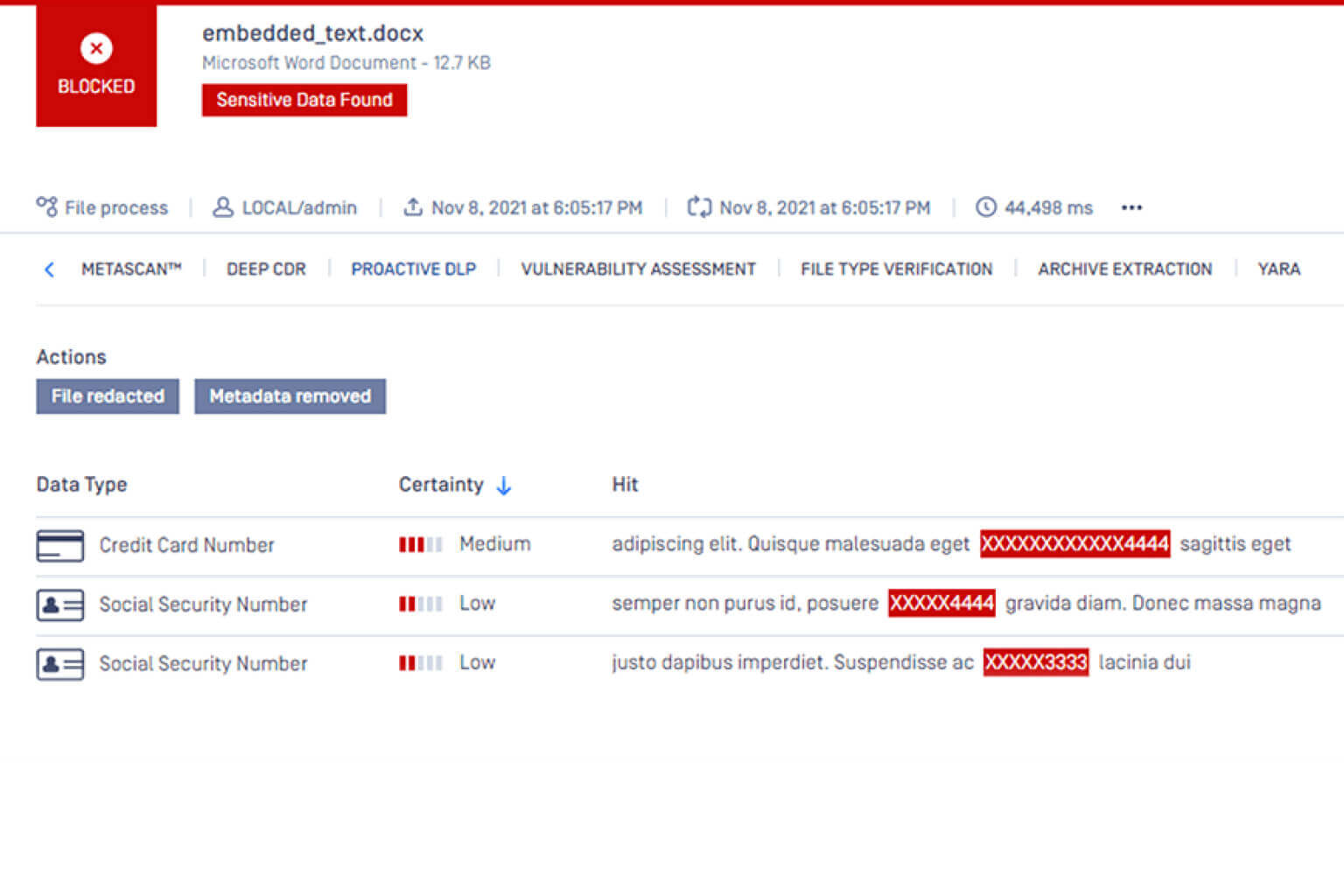
Data Loss Prevention
Detect, block, and redact sensitive and proprietary data like credit card numbers and social security numbers.
Content-check 70+ common file types for confidential data and personally identifiable information (PII) with Proactive DLP (Data Loss Prevention) technology and prevent potential data breaches and leakage of secrets.
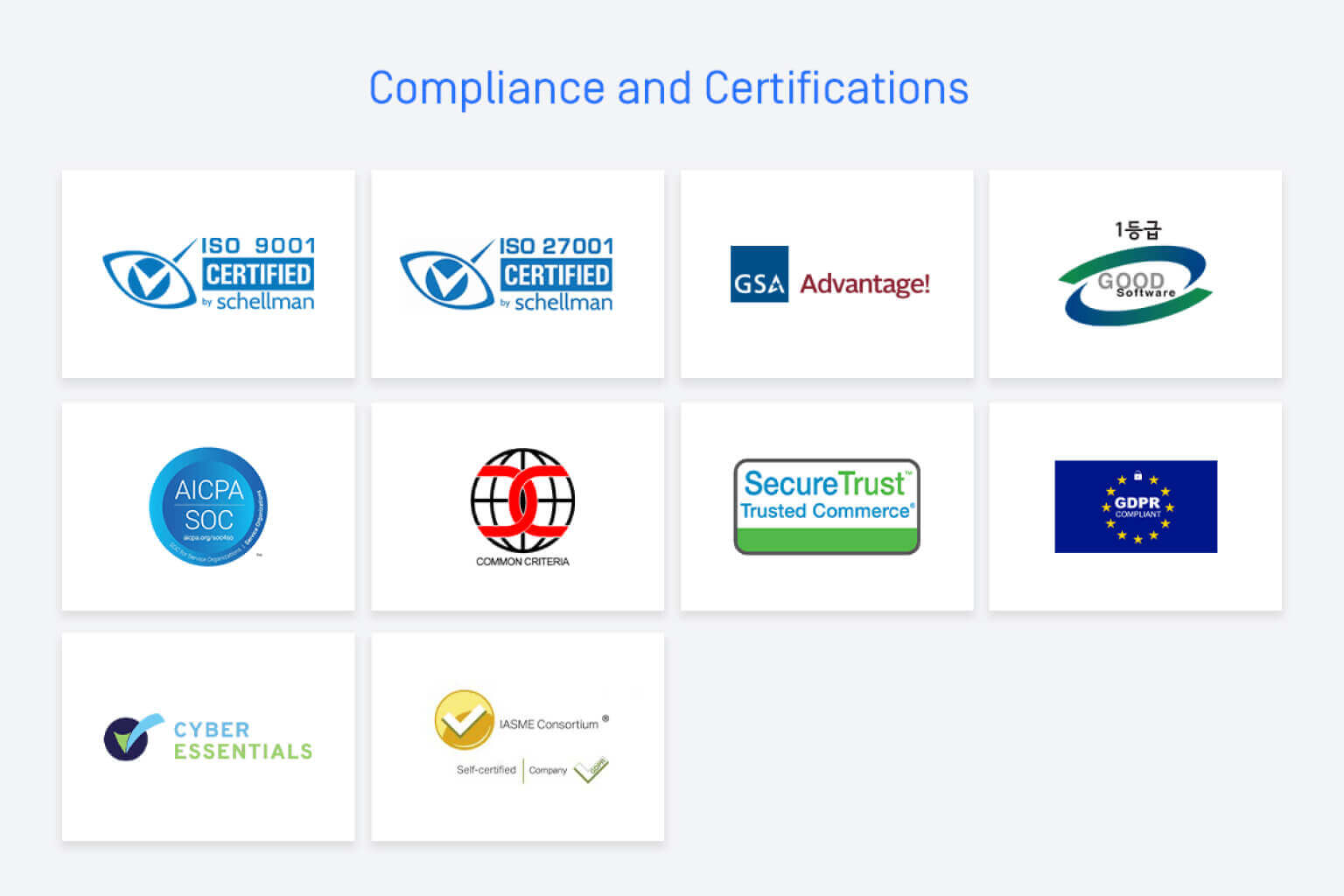
Meet Compliance Requirements
Regulatory rules are enforced to minimize breaches and privacy violations. Meeting compliance requirements is time-consuming and can be costly. If requirements like HIPAA, GDPR, PCI-DSS, etc. are not met, it can result in significant fines and penalties.
OPSWAT Web Application Security technologies provide compliant processes, comprehensive visibility, and detailed reporting capabilities to help meet requirements in the OWASP guidelines.
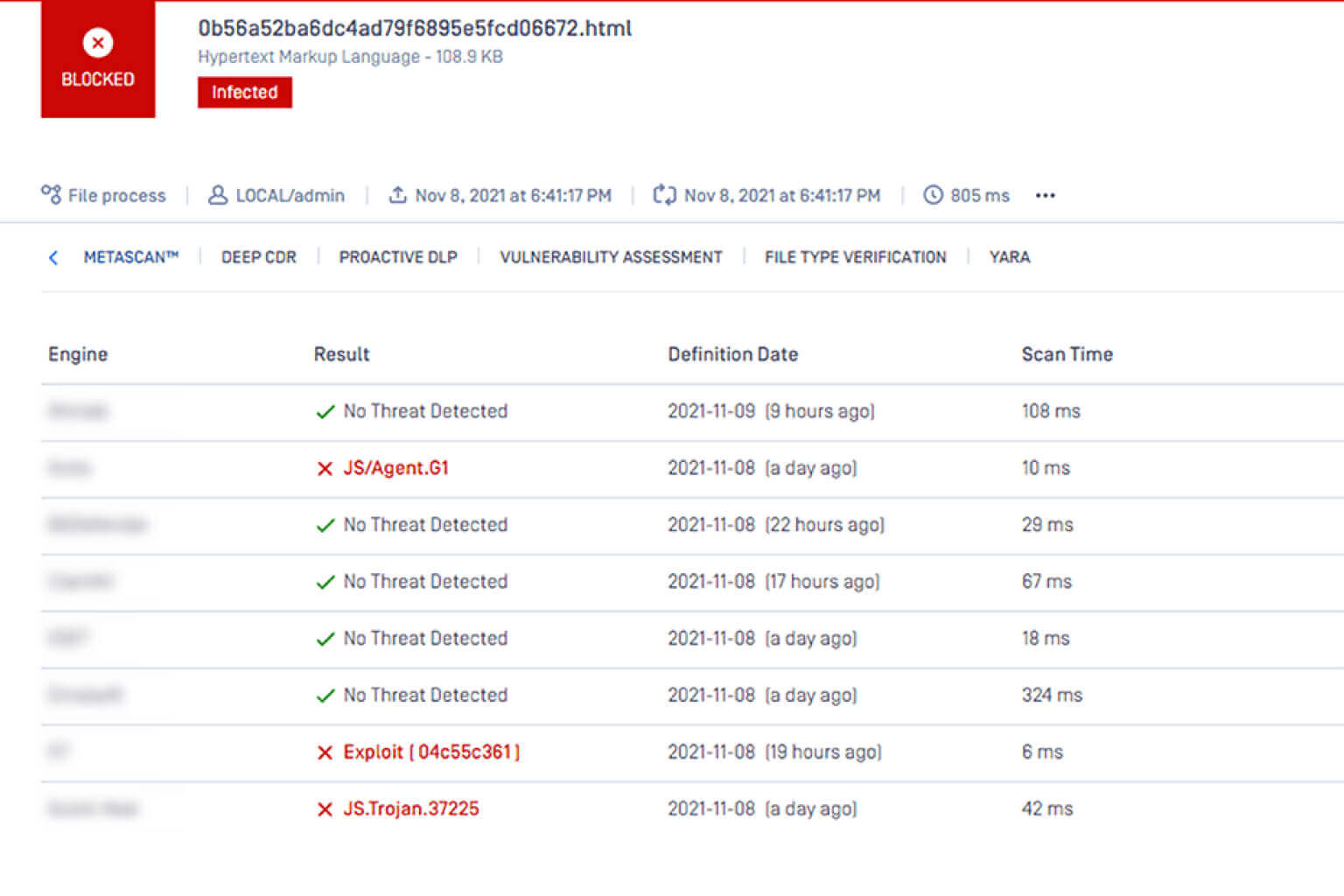
Malware Detection and Prevention
OPSWAT delivers proprietary Multiscanning technology, and is the known leader in the industry and proactively detects 99%+ of known malware threats by using signatures, heuristics, NGAV, and machine learning.
Simultaneous analysis leveraging the combined threat prevention of 30+ antimalware engines is an advanced threat detection and prevention technology that increases detection rates, decreases outbreak detection times and provides resiliency to anti-malware vendor issues.
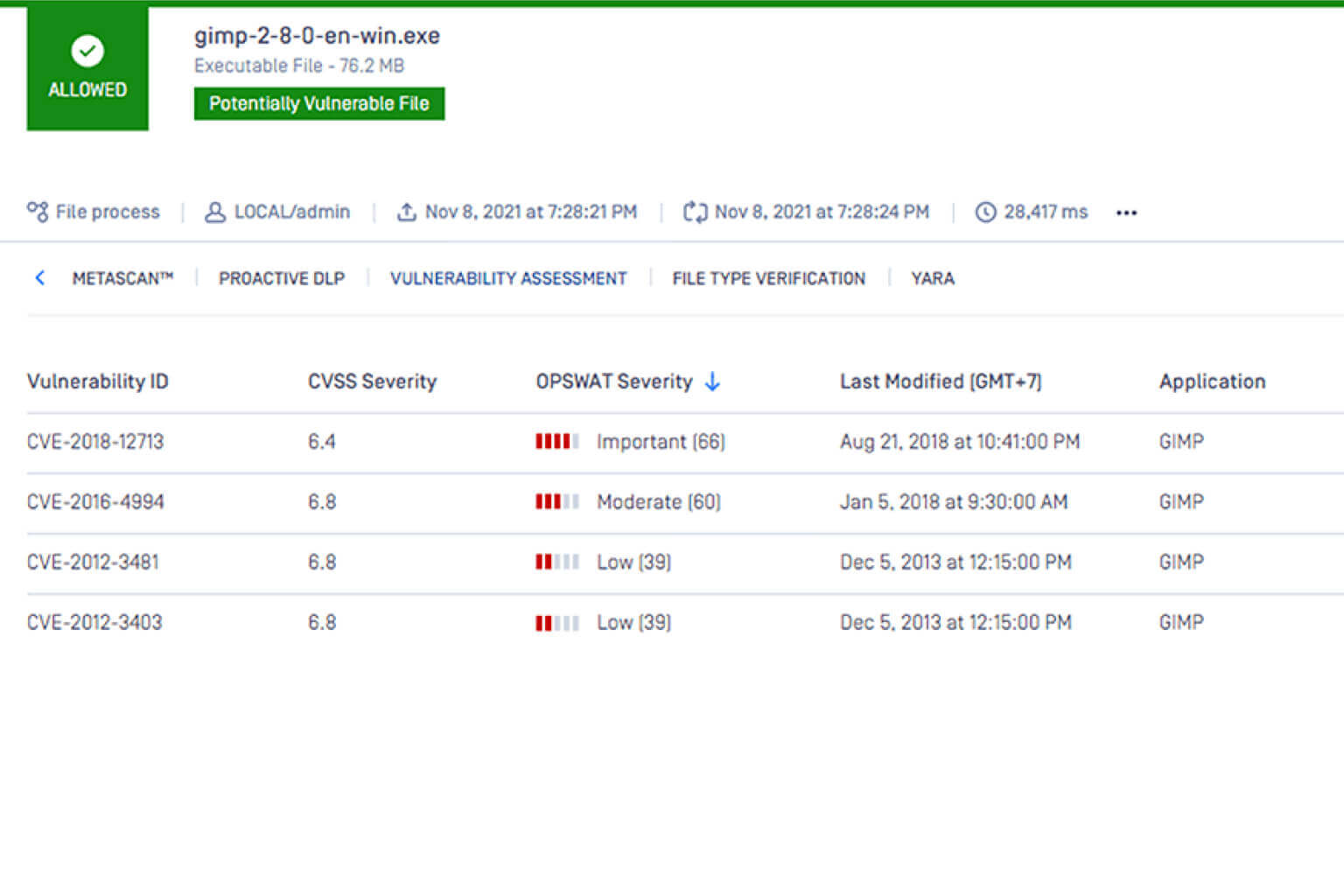
Assess Vulnerabilities Before Deployment
Uploaded files can trigger vulnerabilities in broken libraries or applications. Organizations are increasingly vulnerable to exploits during the detection window when an application is installed and when a vulnerability is detected. Our File-based Vulnerability Assessment scans and analyzes binaries and installers uploaded through your website to detect known application vulnerabilities before they are installed or deployed.

“With Deep CDR, Upwork is able to prevent 100% of zero-day file attacks, compared to only 70% blocked by standard AV. All files with active objects are sanitized. 75% of files are processed and ready in less than a second and 99% in less than six seconds.”
MetaDefender Deployments and Integrations
REST API Integration
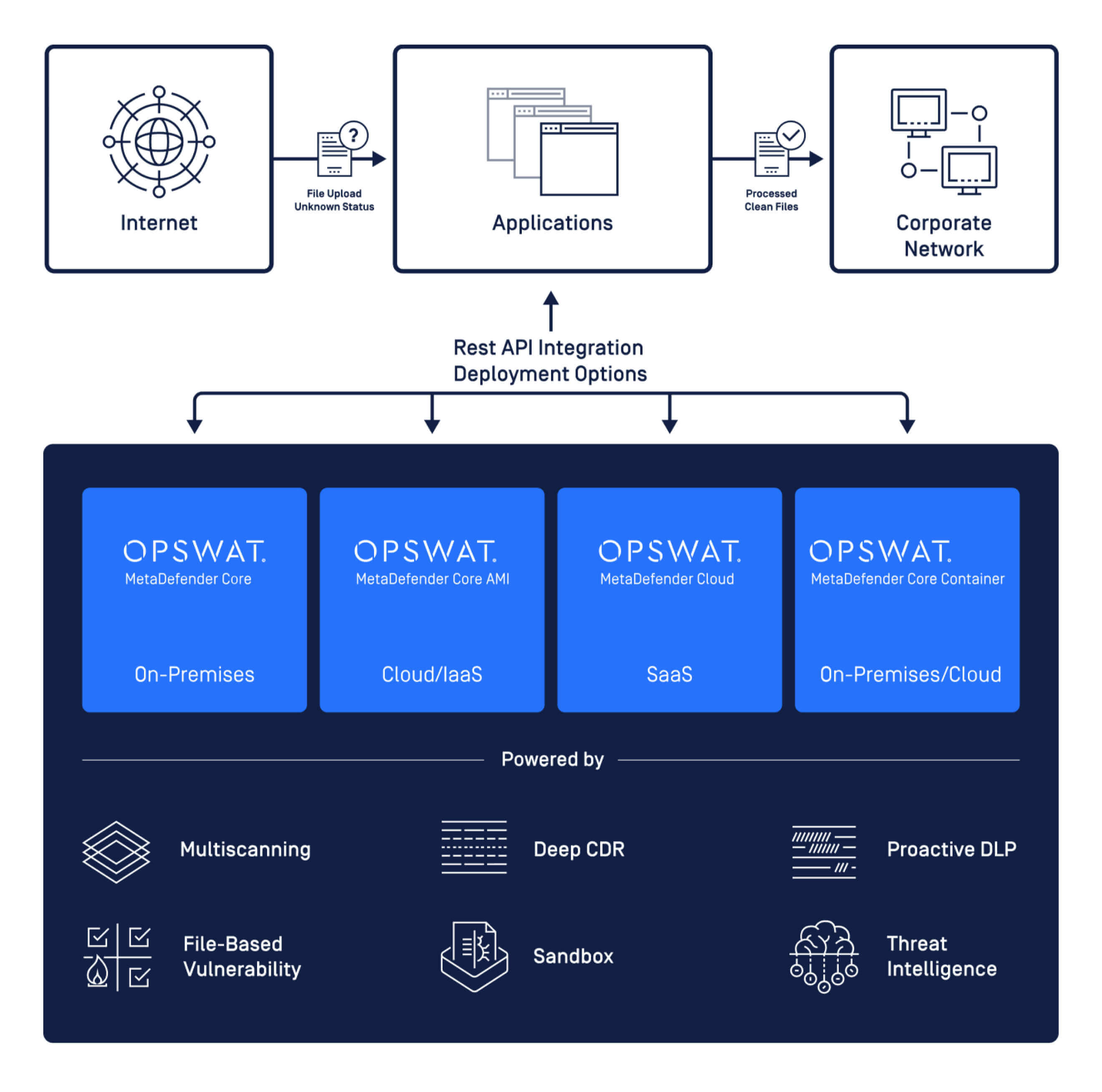
ICAP Interface
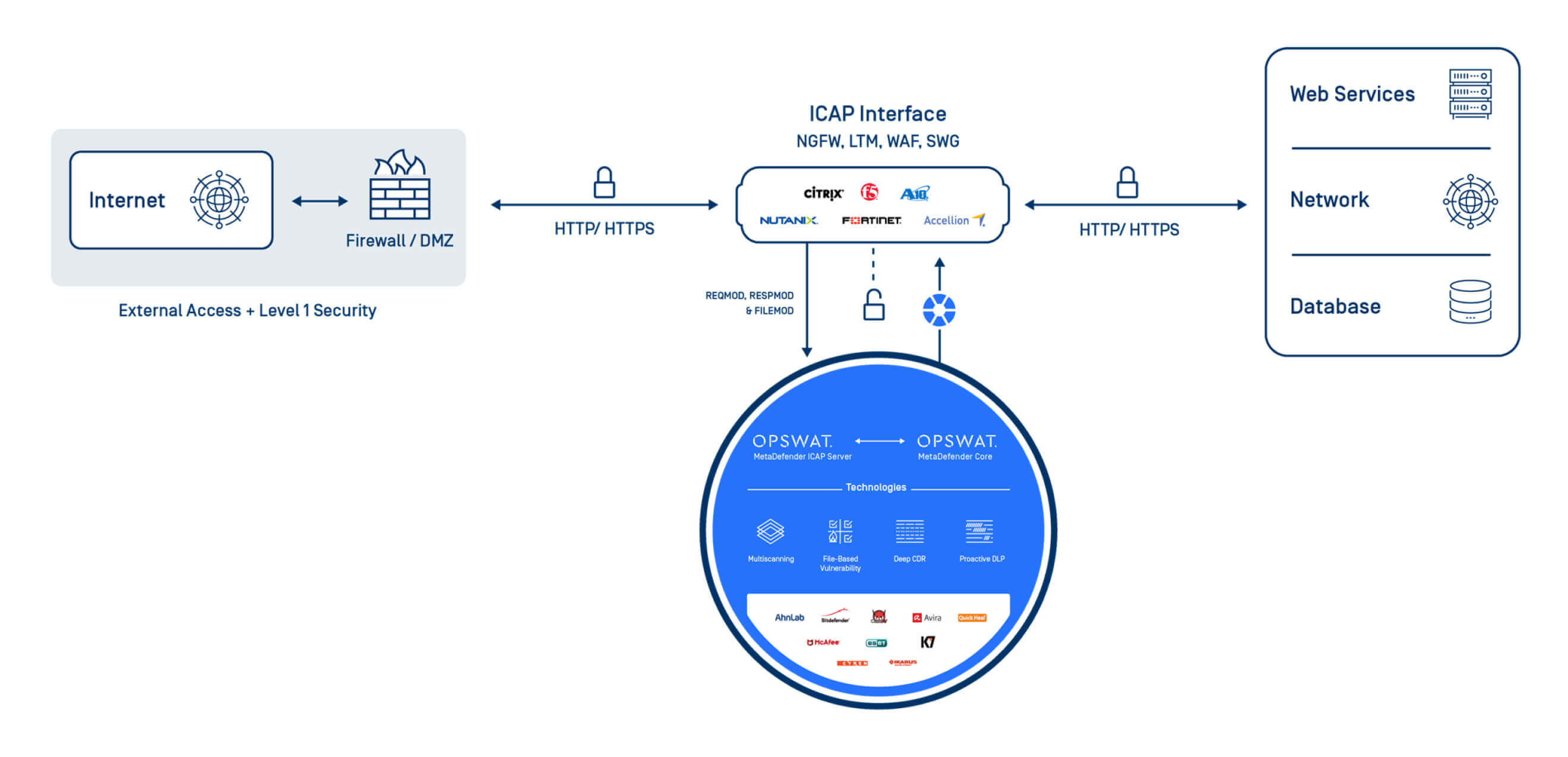
Web Application Security Awards

Named “Best Solution Web Application Security”
By Cyber Defense Magazine
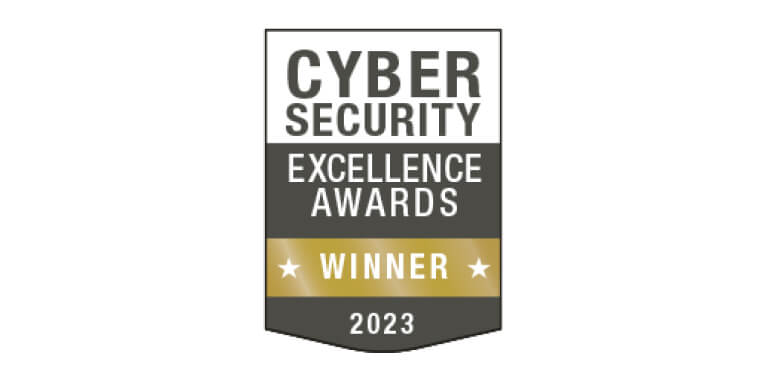
Winner Gold Badge
2023 Cybersecurity Excellency Awards
Web Application Security Options
Core
For integration with your existing security architectures via REST API
ICAP Server
For integration with web apps (via WAF, LB or API Gateway) or Storage (NAS) to detect and prevent threats in file transfer process
Cloud
For integration in cloud and IaaS environment or with your existing SaaS products via REST API and leveraging our large hash database, IP reputation services, and more
Core AMI
For deployment in your AWS account to process received files or protect your S3 buckets
Core Container
For deployment of MetaDefender Core in your containerization environment such as Docker.

